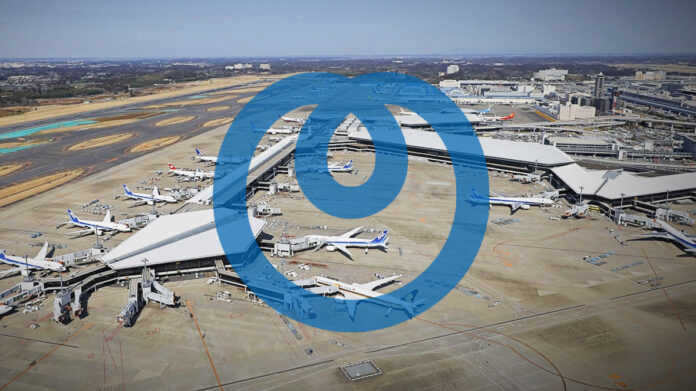NTT has developed an integrated push-to-talk (PTT) application for airport workers to switch between private 5G and terrestrial trunked radio (TETRA) communications. The solution, a joint development with Nippon Airport Radio Services (NARS), has been deployed at Narita International Airport in Tokyo, Japan. The pair called it a “move to level up integrated mission-critical comms” at airports; they will look to deploy the same with other airport customers.
A statement said parallel usage of private 5G networks, increasingly deployed, and TETRA networks, historically deployed, makes both their operation and maintenance a “bit complex”. Specifically, the new 5G/TETRA application is being used by airport staff in and around the ramp area at Narita International Airport. The pair said the combination, which ringfences the PTT service in “dedicated radio waves and closed networks”, means fewer devices for workers.
NTT, represented in the deal by local entity NTT East, selling private 5G under the Giga-Raku 5G brand, will look to sell the application to other industrial environments, via its international SI division also. The statement suggested its usage, and development, in “factories or warehouses, and other facilities with extensive areas”. NTT East and NARS are working with Narita International Airport to develop a number of “smart airport” use cases to leverage its “local 5G” deployment, including autonomous buses in the ramp area.
But TETRA remains in common use for “ground-to-ground wireless comms” in industry, including in “more than 80 airports globally and… five major airports”, said the press statement. It explained: “It is used not only for daily operations such as ground handling and ramp control, but also for mission critical communication in the case of emergency. To smoothly deploy local 5G in airports, it is essential to connect with airport radio systems which are widely used at airports and [deliver] interoperability between the two.”
Narita International Airport uses a TETRA system from Motorola, called WAVE, which now runs “interconnection” with the local private 5G network. NTT commented: “Both systems consist of dedicated radio waves and closed networks, and are not affected by failures or congestion of cellular networks. Therefore, high availability can be expected in emergency situations such as disasters.”

